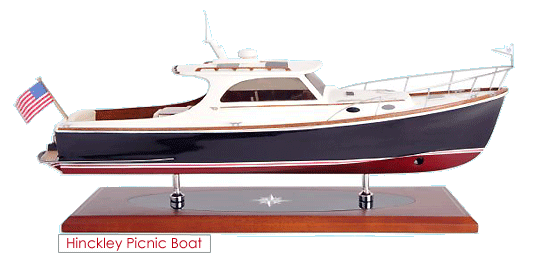Design is 100% objective.
I think you will find that just about every design engineer will strongly disagree with you. I know the ones here at Boeing will, and I suspect the ones at Ferrari and Aston Martin and Bugatti and BMW will, too.
The curve of the
Bluenose's bow would have been just as functional if it had been a straight line above the water. It would have been way easier and cheaper to build that way. But the designer rightly decided it would be way ugly as a straight line and so made it a pleasing (to him) curve, which was harder and more expensive to build but made the boat look like he wanted it to look.
I know several of the design engineers at Teaque (formerly Walter Darwin Teague), the design house that has been creating the interiors for all Boeing commercial planes since the model 314 Clipper. I got to know quite well the designer who was charged with creating the 777's interior, which has become the model for all our interiors since. You know where he got the idea for the cross section with the curved bins side and center bins? This is a classic function follows form example.
He got it from watching a bird fly. He loved the look of a gull coming toward him with the wings swept down. He decided that that's what he wanted the ceiling to look like in the 777, something that would convey an impression of flight, spaciousness, and grace (his exact words, not mine).
So he started sketching this shape as it would fit inside a tube. This led him to realize that by "bending" the overhead bins to conform to his bird shape, he could not only get the shape he wanted, but he could make the bin capacity even larger. And thus was born the pivot bin (sides) and the translating bin (center). So if you ever fly in a 777 or a 737 with the new Sky Interior or a 787, or a 747-8 Intercontinental, look up at the ceiling. Its inspiration was a seagull.
No disrespect here, but taking the position that design is only objective and never subjective tells me that that person has little or no creative imagination. He is probably exactly who you want figuring out the stress analysis of the structure, or even designing the structure to support the shape the design engineers came up with.
But he's not the guy who you want designing the shape because he's got no aesthetic imagination. That takes a sense of aesthetics and an ability to combine aesthetics with function. Our--- and Ferrari's and BMW's and Aston Martin's and Fleming's--- design engineers have that ability. Mr. deFever had that ability. Philip Rhodes had that ability. Our structural, electrical, hydraulic, tooling, etc. engineers probably don't. So these are not the guys you go to when you are deciding what a product should look like.
The curved bow of the
Bluenose was designed by a fellow with a sense of beauty, and that is subjective. The guy who came up with how to make that bow and the structure inside it probably had the aesthetic sense of a clam.
You need both guys to make the whole thing work. Taking the position that all design is objective tells me which one of those guys you are.

And that is not an insult.


 )
)